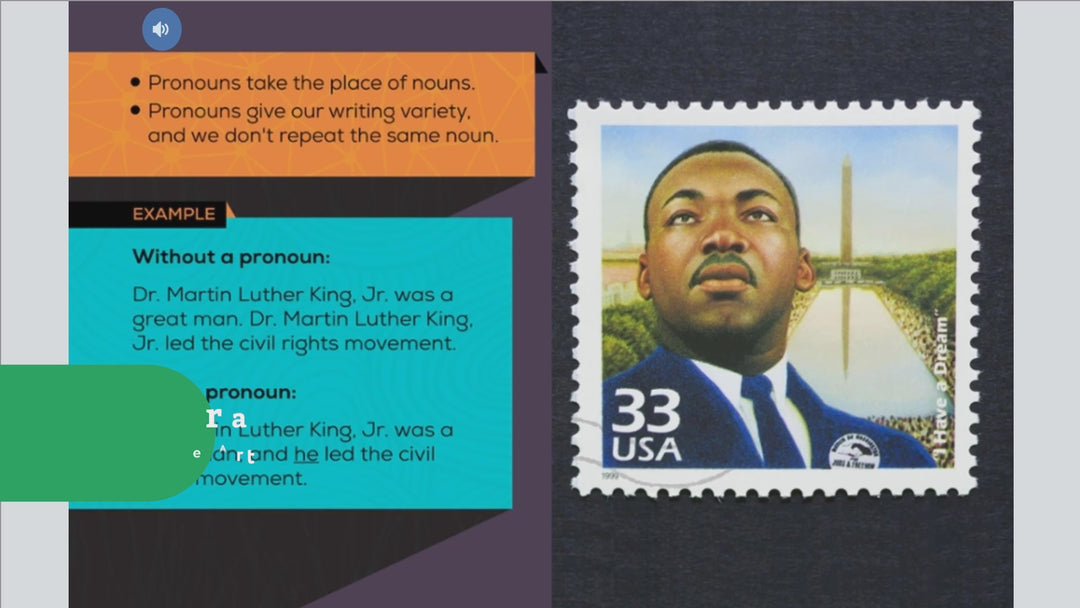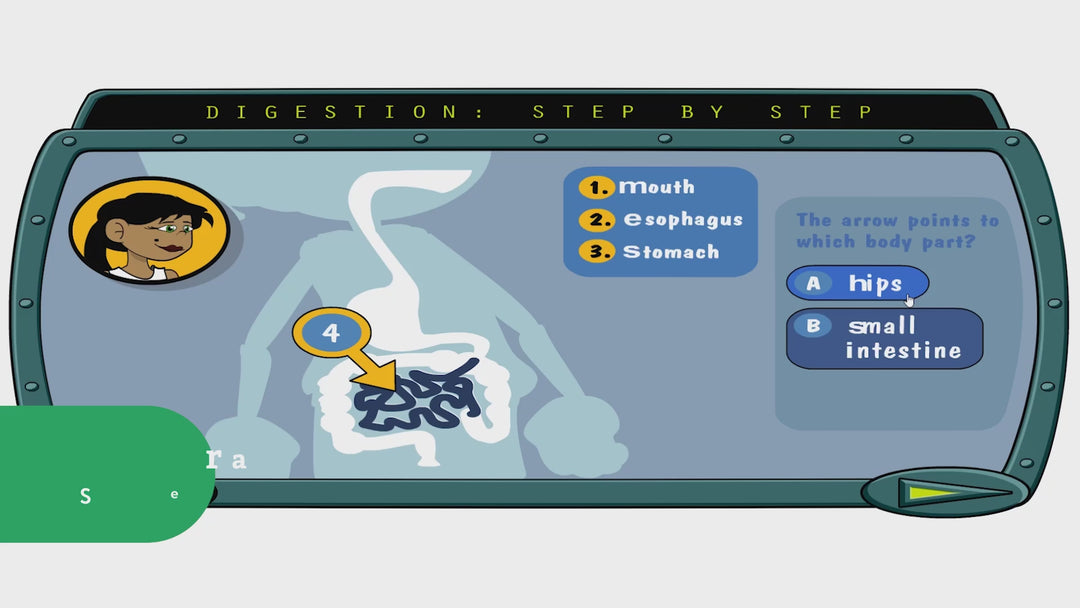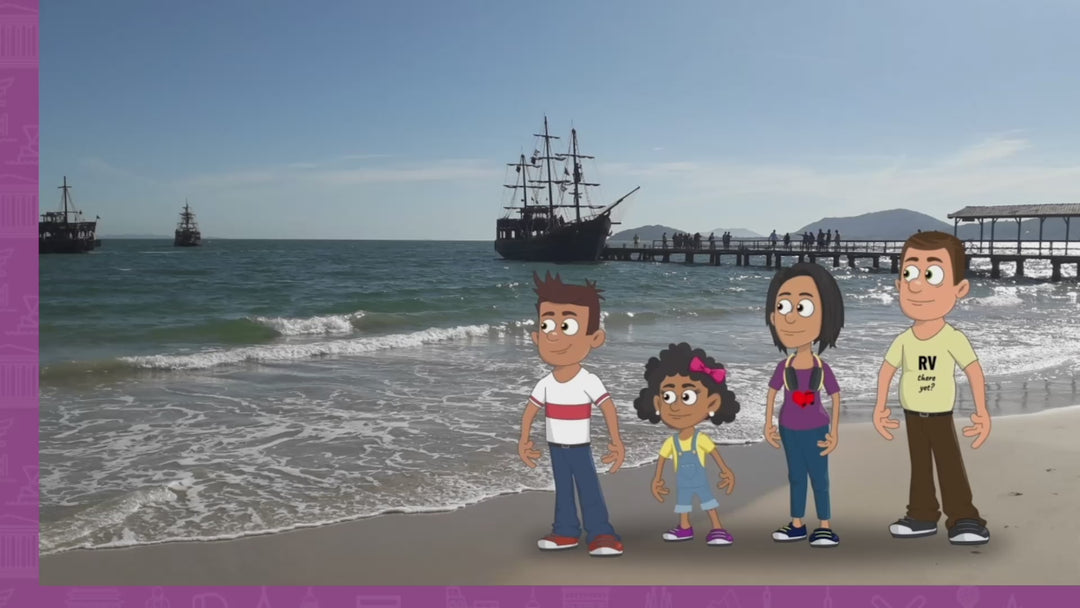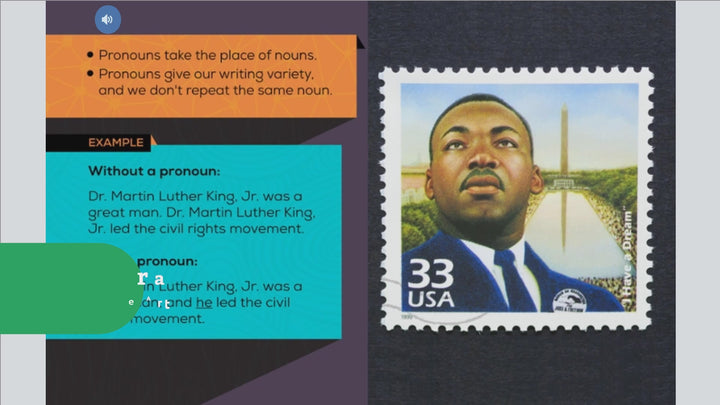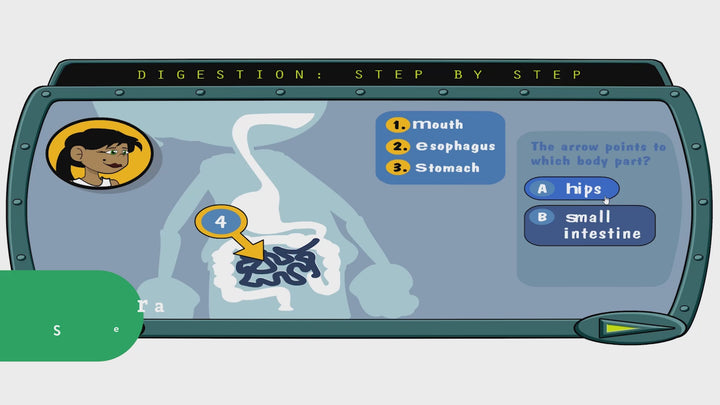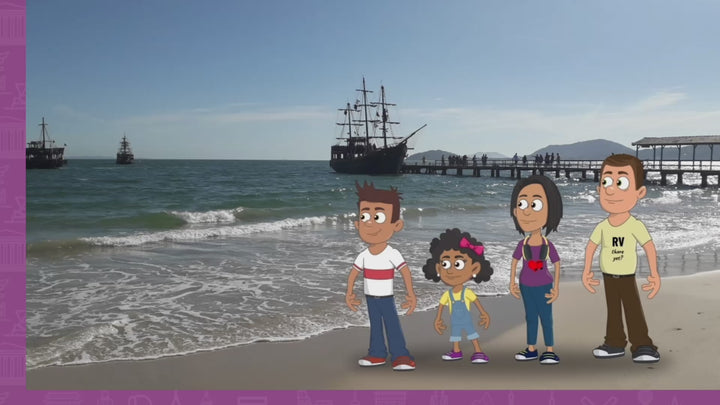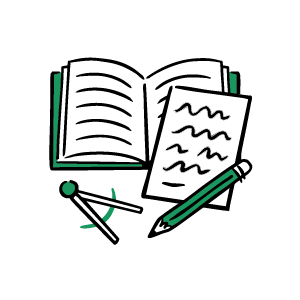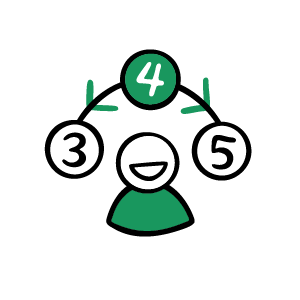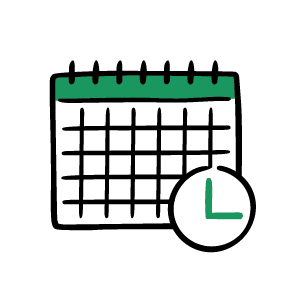Fifth Grade Curriculum
- 4 courses included
- 14-day satisfaction guarantee*
- Update grade level anytime
Subscribe more students, save more!
10% off
2 students
20% off
3-5 students
25% off
6+ students
Time4Learning is a complete, secular online homeschool curriculum. All courses are standards-based and designed to be self-paced, allowing students to move through material at a speed that works for them.
Each lesson includes
- Video instruction
- Interactive quizzes to reinforce learning
- Printable worksheets for offline reinforcement
- Hands-on activities and experiments to do at home
Your fifth grader is transitioning from concrete to abstract thinking. Our fifth-grade curriculum strengthens writing skills through the process of researching, planning, and developing ideas. Math units focus on mastering fraction and decimal operations, developing algebraic thinking, and exploring coordinate planes. In science, fifth graders delve into the properties of matter and learn more about physical and chemical changes. In social studies, kids embark on a new virtual road trip to study important locations and events that shaped U.S. history before 1860.
Fifth graders are experiencing significant growth in many areas and are starting think more abstractly and critically. Our curriculum challenges problem-solving skills and enables fifth graders to tackle more complex tasks.
At Time4Learning fifth graders discover:
- Operations with fractions and decimals
- Variables and how are they are used in complex equations
- Volume and how to measure it using unit cubes and formulas
Fifth graders will focus on reading and comprehending more complex texts. They will also write detailed essays and reports. Finally, they'll focus on vocabulary, speech, grammar, and strong writing skills.
At Time4Learning, fifth graders explore:
- Language and grammar skills along with parts of speech
- Advanced comprehension skills with inference, comparing, contrasting, and summarizing
- Narrative, opinion, research and informative writing
- Integrated language arts activities that enhance reading and writing
Fifth graders are developing a greater understanding of historical events and their impact on the world around them. At Time4Learning students embark on a virtual road trip to important historical locations across the United States studying the events that shaped US History before 1860.
At Time4Learning, fifth graders explore:
- Indigenous American people and colonists
- Life in the British colonies
- The Revolution and its key turning points
- The U.S. Constitution and the Bill of Rights
- Westward Expansion of America
Fifth graders can now test questions and analyze data to confirm a hypothesis, strengthening their ability to apply the scientific method.
At Time4Learning, fifth graders discover:
- How to test and analyze data to support a hypothesis
- Physical and chemical changes in the world around us
- Ecosystems and the vital roles of air, water, and soil in the environment
- Patterns throughout the year influenced by the sun, moon, and constellations
- The impact of computers on society and their expanding role in everyday life
This outline shows an example of both what your child will learn (the scope) and the order in which the lessons build on each other (the sequence). More detailed lesson plans are available in the parent account. All lessons are entirely customizable.
Fifth Grade Math
Chapter 1: Whole Number Operations
- Place Value and Rounding
- Multi-Digit Multiplication
- Long Division
Chapter 2: Decimals
- Place Value and Comparing
- Addition, Subtraction, Multiplication
Chapter 3: Fractions
- Adding and Subtracting Fractions
- Multiplying and Dividing Fractions
Chapter 4: Algebra and Patterns
- Expressions and Equations
- Number Patterns
Chapter 5: Geometry
- Lines, Angles, and Shapes
- Volume and Area
Chapter 6: Measurement
- Conversions and Units
Chapter 7: Data
- Graphs and Line Plots
Chapter 8: Probability
- Simple Probability
Chapter 9: Review and Test Prep
- Mixed Practice
Fifth Grade Language Arts
Chapter 1: Vocabulary Skills
- Context Clues and Word Relationships
Chapter 2: Grammar and Usage
- Parts of Speech
- Subject-Verb Agreement
Chapter 3: Sentence Structure
- Types of Sentences
- Combining Sentences
Chapter 4: Punctuation and Capitalization
- End Punctuation
- Commas, Quotation Marks
Chapter 5: Writing Process
- Prewriting to Publishing
Chapter 6: Narrative Writing
- Personal Narratives
Chapter 7: Expository Writing
- Informative Paragraphs
Chapter 8: Opinion Writing
- Persuasive Arguments
Chapter 9: Research and Reports
- Researching and Summarizing
Chapter 10: Poetry
- Sound Devices and Imagery
Chapter 11: Drama and Dialogue
- Plays and Speaking Parts
Chapter 12: Literary Elements
- Theme, Character, Plot
Chapter 13: Reading Comprehension
- Main Idea, Inference, Summary
Chapter 14: Figurative Language
- Metaphor, Simile, Personification
Chapter 15: Informational Text
- Text Structures and Features
Chapter 16: Listening and Speaking
- Group Discussions and Presentations
Chapter 17: Integrated Projects
- Reading and Writing Connections
Fifth Grade Science
Chapter 1: Scientific Investigation
- Tools and Methods
Chapter 2: Life Science
- Cells, Adaptations, Ecosystems
Chapter 3: Earth and Space
- Earth’s Systems and Solar System
Chapter 4: Physical Science
- Forces, Energy, Matter
Chapter 5: Engineering and Design
- Design Thinking and Problem Solving
Fifth Grade Social Studies
Chapter 1: Native Peoples of North America
- Tribes and Traditions
Chapter 2: Exploration and Colonization
- Early Settlements
Chapter 3: Colonial Life
- Economy and Culture
Chapter 4: Road to Revolution
- Taxes and Resistance
Chapter 5: American Revolution
- Key Battles and Leaders
Chapter 6: Forming a New Nation
- Declaration, Constitution
Chapter 7: Westward Expansion
- Trail of Tears, Growth
Chapter 8: Civil War and Reconstruction
- Causes and Effects
Chapter 9: Industrialization and Immigration
- Factories and Urban Growth
Chapter 10: America Becomes a World Power
- WWI and Foreign Policy
Chapter 11: Modern America
- Technology and Culture
Chapter 12: Citizenship and Government
- Civic Duties and Rights
